The town of Sighisoara is a gorgeous piece of medieval Romanian history and a UNESCO World Heritage Site – here are the best things to do in Sighisoara, Romania.
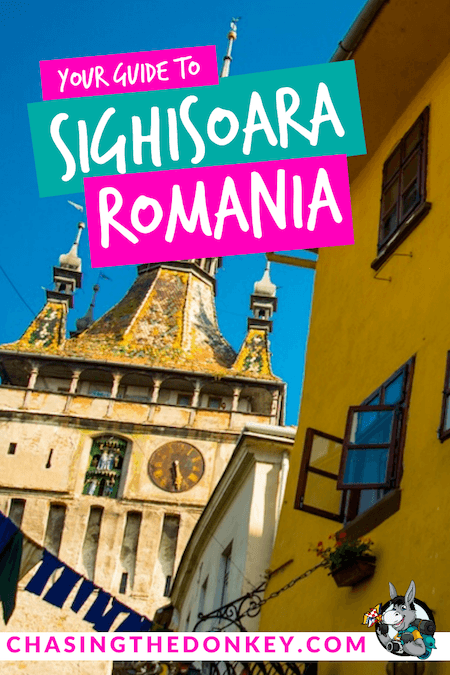
The town of Sighisoara is a gorgeous piece of medieval Romanian history and a UNESCO World Heritage Site for its ‘outstanding testimony to the culture of the Transylvanian Saxons.’ Today, the town is bigger than it once was, with modern suburbs, a bus station, and a few supermarkets surrounding the town center.
But it’s in this center that every wonderful sight and experience can be found. Sighisoara was once a hilltop fortress town, and that fortress town remains perfectly intact and populated to this day.
Skip Ahead To My Advice Here!
Things To Do In Sighisoara – Attractions In Sighisoara
It’s here that you’ll find the birthplace of Vlad Dracula, the real man behind the myth, as well as historic sites like the Sighisoara Clock Tower and the Church on the Hill. It’s also a city with wonderful cuisine and some excellent restaurants.
You only need a day or two to see it all, but there are really some amazing things to do in Sighisoara. If you’d like to learn more about Sighisoara’s history, then here are some great books to read before you visit Romania.
1. Visit The Clock Tower & Sighisoara History Museum
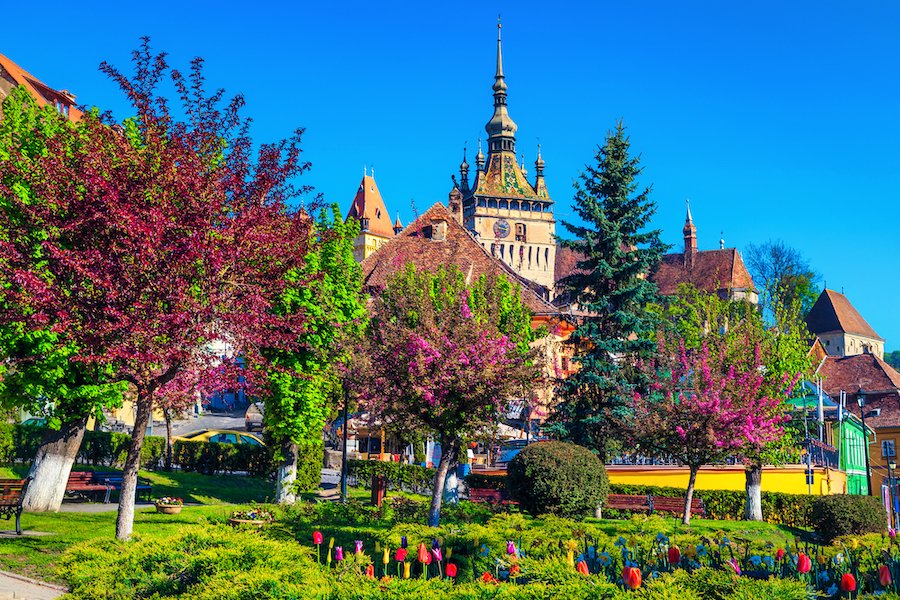
One of the main attractions in Sighisoara can be seen from almost any point within the old fortress town and from the modern streets below. Painted in a vibrant yellow, the clock tower itself dates back to the fourteenth century, and it once controlled the main gate into the city. Not only can you admire it from below, but you can also head inside to enjoy the Sighisoara History Museum, which is spread over several floors as you make your way to the top.
One of the most impressive items in the museum is a detailed old model of Sighisoara, which really shows how the old town towers above everything below. You can even see the mechanism of the old clock inside. Keep climbing, and you’ll eventually reach a narrow staircase that will take you to the top of the tower, which offers a fantastic view over the city and beyond. It’s well worth the 15 lei entry fee, considering you get access to a museum loaded with medieval artifacts and the aforementioned model, as well as one of the best views in the city.
The clock tower is one of the nine (out of fourteen) remaining guild towers and one of the only ones you can enter, so this is a great place to start your Sigisoara visit. Other notable towers in the city square include the Tailors’ Tower and the Cobblers’ Tower.
2. Walk To The Church On The Hill Via The Scholar’s Stairway
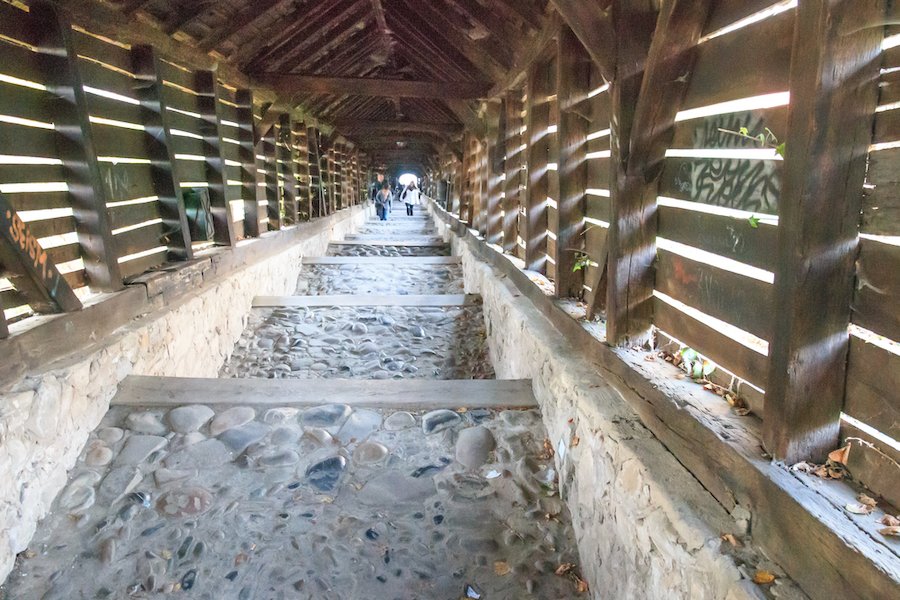
When walking the colorful cobbled streets of Sighisoara, you won’t be able to miss the medieval-covered wooden stairs leading from the town center up towards the church. Initially built for teachers and students to make their way up to class, hence the name, it’s very worth taking the 175 steps up to the magnificent Church on the Hill, the Evangelical Cemetery, and the Rope Tower.
Inside the church itself, you’ll find fifteenth-century frescoes and the only crypt in Transylvania where notable Sighisoaran citizens have been buried.
This is also the best route to visit the atmospheric Sighisoara Saxon Cemetry nearby, where you can find the graves of the Saxons who built the church.
As a bonus, the church is at the highest point in all of Sighisoara, and standing in front or behind the church offers visitors an incredible view that is a free alternative to the view from the clock tower, which you have to pay for. It’s worth experiencing both views; however, a view from the clock tower includes the church and a view from the church consists of the clock tower. Visiting The Church on the Hill is easily one of our favorite things to do in Sighisoara.
3. Saxon Cemetery
If you’re hitting up Sighisoara and fancy a stroll that’s a bit off the beaten path but steeped in history, the Saxon Cemetery is the place to go. Perched up by the Church on the Hill – yeah, you’ve got to tackle those covered stairs, but it’s totally worth it – this cemetery is a serene spot that gives you a real sense of the town’s past.
Walking among the gravestones, you’ll see names and dates that trace back centuries, offering a quiet reminder of the people who once called this place home. It’s not just a graveyard; it’s like an open-air history book. Plus, the views of Sighisoara from up here are pretty unbeatable. I think it would be perfect Instagram material without the selfie sticks and crowds.
Whether you’re a history buff, looking for some peace and quiet, or want to see a different side of the town, the Saxon Cemetery delivers. Just remember, it’s an actual resting place, so keep the vibe respectful.
4. Visit Casa Vlad Dracul

Sighisoara, being Dracula’s birthplace, is undoubtedly one of the big draws to the city, and there’s no shortage of related things you can get up to in Sighisoara as a result. Casa Vlad Dracul is the perfect place to start your Dracula adventure since you can actually visit the room he was supposedly born in and then head downstairs for a meal in the restaurant, which comprises the bulk of the house.
The menu isn’t Dracula-themed, but the food is local and delicious, plus it is standard and affordably priced. Have some delightful ciorba (soup) followed by some mici (sausage with mustard) or sarmale (cabbage rolls)? Once you’ve enjoyed a meal at Casa Vlad Dracul, you can head down to the ground floor, where you’ll find a shop that sells handmade original local arts and crafts that make for some unique, one-of-a-kind Sighisoara souvenirs. These crafts beautifully showcase the traditional arts of this region of Transylvania.
The reason the building is called Casa Vlad Dracul is that it was literally owned by Vlad Dracul, father of the famous Dracula (Dracul means “The Dragon” and Dracula means “Son of the Dragon”). If you’d like to learn more about the man who inspired the Dracula legend, you can stop at the nearby ‘Dracula Investigation,’ which takes you through the story of Vlad Tepes (Vlad the Impaler) and separates the facts from the myths.
5. Find The Statue Of Vlad The Impaler
Why not carry on the Dracula theme? It’s easy to miss the statue of the man himself if you’re not looking for it, but you’ll find it marked on Google Maps as ‘State of Vlad Tepes. It’s within the Old Town and worth finding as there’s also a great view over the newer part of Sighisoara right behind the statue!
6. Admire The Holy Trinity Church
You can find this Russian Orthodox Church outside of the Old Town (to the north), but it’s well worth paying a visit! Chances are you’ll walk past it on your way to the old fortress town anyway, as it’s on the walking route from the bus station.
Set on the Tarnava Mare River in an imposing Neo-Byzantine style, it looks very much like a cathedral but is, in fact, a church built in the twentieth century. It’s just as impressive inside as out, so make sure you pop in to see the domed ceiling and frescoes.
While you’re there, visit Sighisoara’s New Town. It’s not as pretty as wandering inside the citadel walls, but the new town is still surprisingly colorful, and there are plenty of restaurants and cafes to seek out.
7. Wander The Colourful Streets
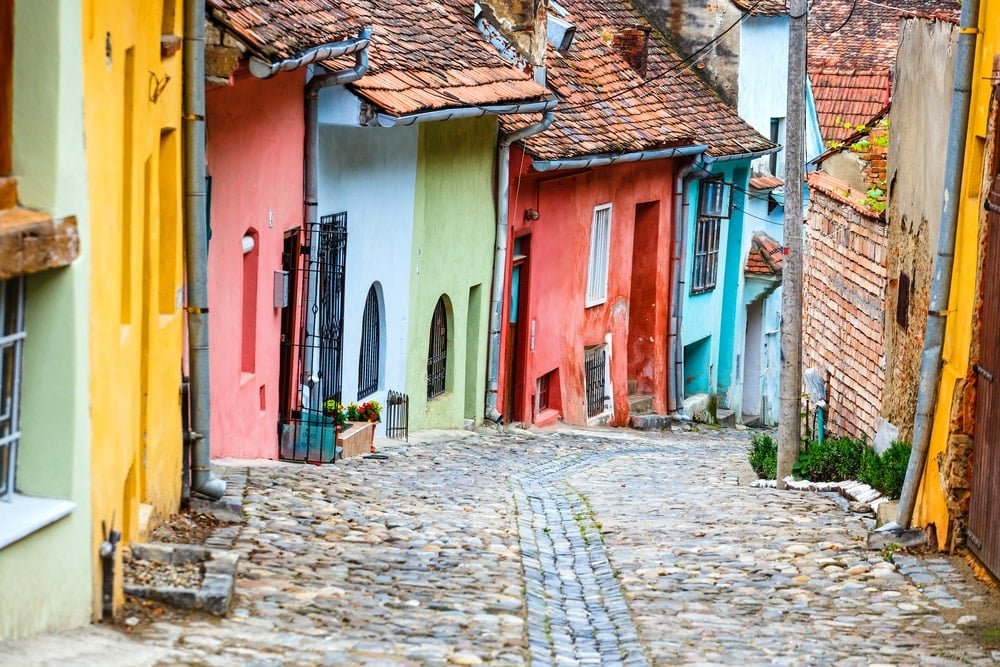
For people who love colorful facades, Sighisoara is a dream. Well-maintained pastel-colored buildings line cobbled streets; it’s honestly hard to believe that most of these buildings date back to the twelfth century.
Many of these are souvenir shops, and it’s good fun ducking in to see what you’ll find; of course, there are a lot of Dracula-themed items, but you’ll also find painted eggs, religious paintings, stunning ceramics, and hand-carved items.
8. Explore The Torture Chamber
Alright, if you’re someone who finds the slightly grim and gritty bits of history fascinating, then you’ll want to check out the Torture Chamber in Sighisoara. This isn’t your everyday tourist spot, but it’s definitely intriguing. Located in the very heart of this medieval citadel, the Torture Chamber gives you a peek into the darker side of justice in the old days.
Think less about knights in shining armor and more about how those knights kept order when things got out of hand.
The chamber is part of the Clock Tower, which means you’re not just visiting a place of historical eyebrow-raises; you’re also in one of the town’s key landmarks. Inside, you’ll find an array of torture instruments that look like they came straight out of a horror movie – because, well, they did.
But here’s the thing: it’s all real. These were actual tools used to extract confessions or punish those who ran afoul of the law back then. Visiting the Torture Chamber is a bit of a walk on the wild side.
9. Have A Drink In Teo’s Cellar
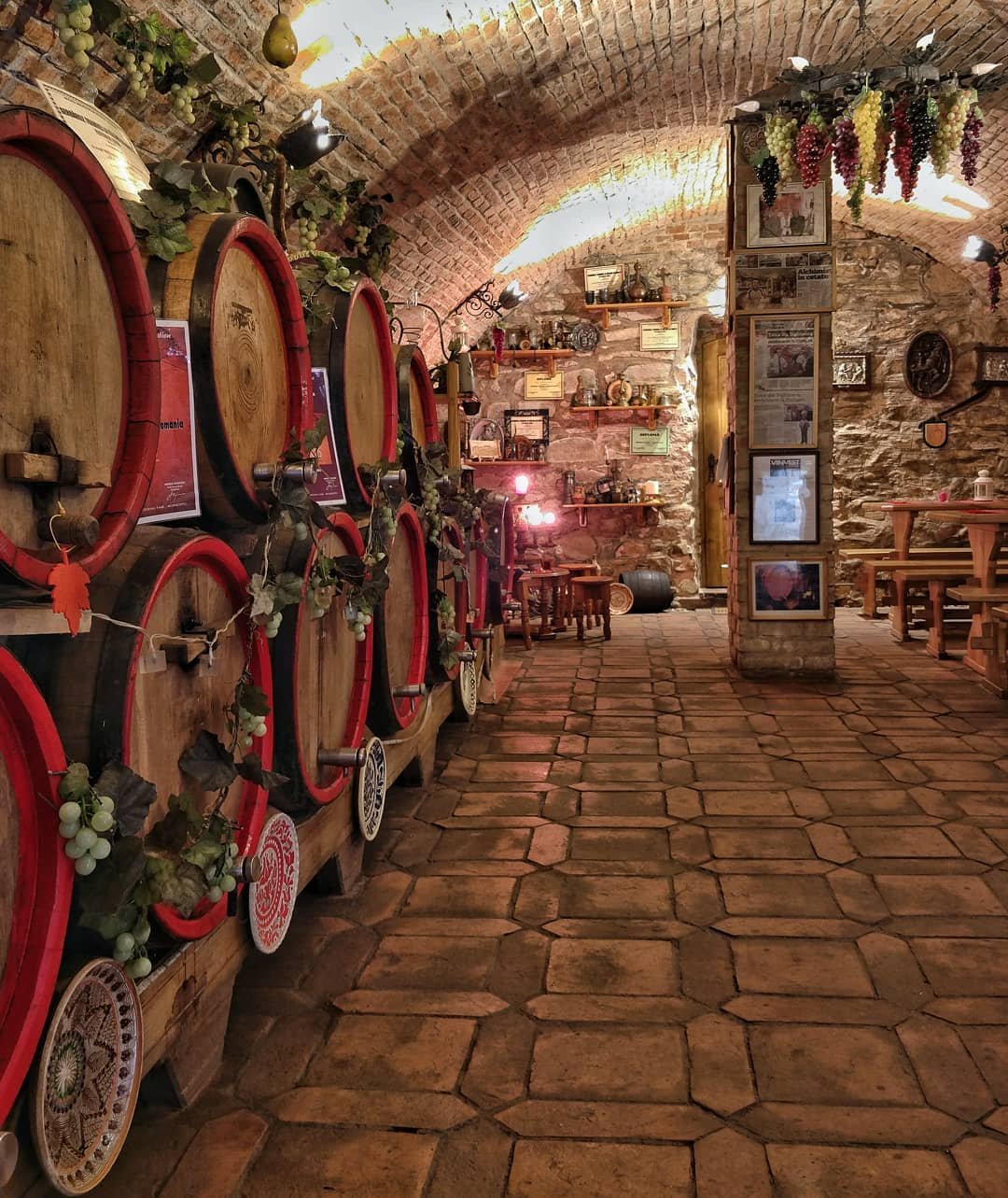
If you enjoy visiting breweries and love sampling local alcohol, then a stop at the 500-year-old Teo’s Cellar is a must. Using ancient Saxon recipes, their brandy and liqueurs have been brewed in the barrel for over three years; this is a perfect place to pick up some souvenirs, do a tasting tour, or see the beautiful interior and impressive cellar itself.
You can even rent a room there! The hosts are kind, welcoming, and incredibly knowledgeable about their craft. Stop by for a free sample, at least.
10. Sit Outside For Lunch With A View
If you’re looking for a perfect place to stop for lunch or dinner, then try the Medieval Cafe Restaurant; they serve traditional Romanian food and coffee and drinks. The interior lives up to its name and feels like taking a step back in time, but if the weather is nice, ask to eat in the courtyard, where you can get a magnificent view of the towers.
11. Easter Market
If you’re around during Easter, the Easter Market is a treat. It’s a wonderful time to see Sighisoara come alive with spring colors. Local artisans sell everything from painted eggs to woven baskets, and there are plenty of traditional foods to try. It’s a more laid-back event, perfect for families and anyone looking to soak up local traditions and crafts.
These festivals and events are just the tip of the iceberg when it comes to what Sighisoara has to offer. They’re not just about having fun; they’re about immersing yourself in the local culture, meeting people, and making memories. So, whether you’re planning your trip around a specific event or happen to stumble upon one while you’re there, make sure to dive in and enjoy it.
Trust me, it’ll make your visit to Sighisoara that much more unforgettable.
12. Find New Things To Eat In Sighisoara

This place serves up some seriously tasty dishes that you won’t want to miss. First off, let’s talk sarmale – these are delicious cabbage rolls stuffed with minced meat and rice, slowly cooked in a savory tomato sauce. They’re often served with a side of creamy polenta and a dollop of sour cream, making for a comfort food experience that’s hard to beat.
Then, there’s mici, little grilled sausages seasoned with garlic, spices, and all things nice. They’re perfect for a quick bite, especially if you’re exploring the town and need some fuel on the go.
Don’t skip the soups, either. Ciorba de burta, a traditional sour soup made from beef tripe, might sound adventurous to some, but it’s a must-try for the daring foodies out there. It’s tangy, rich, and surprisingly refreshing. And for something a bit sweeter, grab a slice of cozonac, a sweet bread filled with nuts, cocoa, or Turkish delight, perfect with a cup of coffee after wandering around town.
Brands We Use And Trust
13. Attend A Festival Or Event
Sighisoara Medieval Festival
Let’s kick off with the big one – the Sighisoara Medieval Festival. Held annually in late July, this festival is like stepping into a time machine. The entire old town transforms with medieval music, knights in shining armor, and artisans showing off their crafts.
It’s a blast for all ages, with street performances, workshops, and even archery. It’s easily the highlight of the year, turning the town into a lively tableau of the past. If you’ve ever wanted to feel like you’re in a real-life fairytale, this is your chance.
Sighisoara Blues Festival
For something a little more modern but equally captivating, check out the Sighisoara Blues Festival. Typically held in March, this event brings together local and international blues artists for a series of concerts that’ll have you tapping your feet and nodding your head in no time.
This festival is a fantastic opportunity to experience the universal language of music in a setting that’s anything but ordinary. Whether you’re a die-hard blues fan or just enjoy live music, this festival is a great way to experience the town’s vibrant nightlife.
Sighisoara Film Festival
Film buffs, rejoice! The Sighisoara Film Festival, usually happening in August, is a relatively new addition to the town’s cultural scene but has quickly become a favorite. It showcases a mix of Romanian and international films, offering something for cinephiles of all tastes.
The film fest is not just about watching movies; it’s about discussions, workshops, and meeting filmmakers. It’s a cozy, intimate festival that offers a unique cinematic experience in a historic setting.
14. Go Shopping For Souvenirs
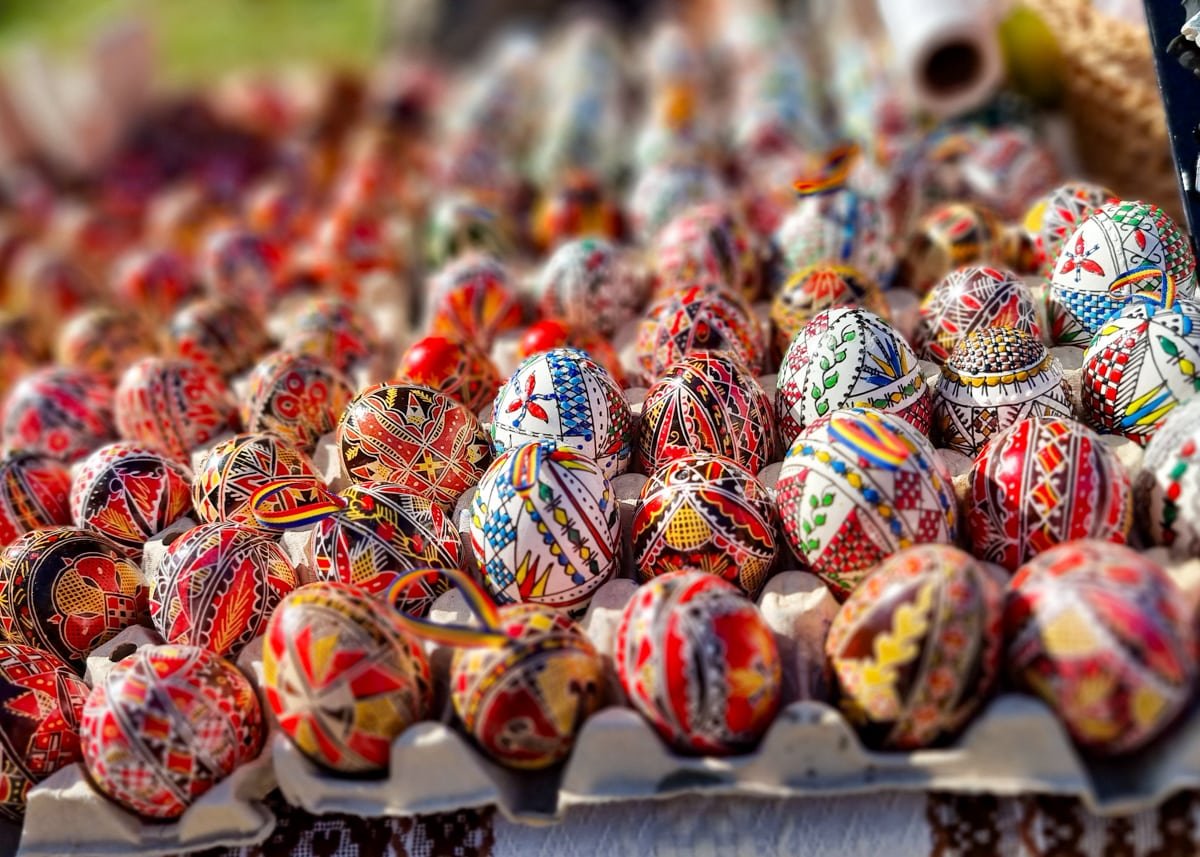
If you’re hitting the cobblestone streets of Sighisoara and looking to snag some authentic souvenirs, you’re in luck. This medieval town is not just a feast for the eyes but also a treasure trove for unique finds. Head over to Citadel Square, where the heart of Sighisoara’s shopping beats.
Here, you’ll find a cluster of small shops brimming with handmade crafts that scream authenticity. From intricately painted eggs (a Romanian tradition) to hand-carved wooden artifacts that tell a story of centuries-old craftsmanship, there’s something for everyone.
Don’t skip the local markets, either. They are your go-to for finding everything from homemade jams and honey to textiles that carry the essence of Transylvanian culture. And for those with a literary bend, look out for shops selling books about local legends and history—Vlad the Impaler, anyone?
Remember, buying directly from artisans not only gets you a piece of Sighisoara to take home but also supports the local economy. So, dive in, explore, and remember to bargain a little—it’s all part of the experience!
15. Take A Day Trip From Sighisoara
Alright, if you’re in Sighisoara and thinking, “What’s next?” let’s talk day trips. Because let’s face it, as awesome as Sighisoara is, there’s a whole lot of Romania out there waiting to be explored. And guess what? Some pretty cool spots are just a hop, skip, and a jump (or, you know, a short drive) away. So, grab your map or smartphone because, honestly, who uses maps these days? Let’s plot some adventures.
Biertan Fortified Church
First up, we’ve got the Biertan Fortified Church, and it’s a must-see. About an hour’s drive from Sighisoara, this place is not just a church; it’s like a mini fortress. Back in the day, folks didn’t mess around when it came to protecting their sacred sites. And Biertan? It’s like the Fort Knox of churches.
The architecture is stunning, with massive walls and towers that have seen centuries roll by. It’s also on the UNESCO World Heritage list, which is no small feat. Aside from being a feast for the eyes, the surrounding village is super charming and worth a wander. Grab a bite, soak in the vibes, and enjoy a step back in time.
Viscri
Next, let’s talk about Viscri, about a 90-minute drive from Sighisoara. This village might not be on everyone’s radar, and that’s exactly why it’s worth the trip. Viscri is home to another one of those fortified churches (seeing a theme here?), and it’s as picturesque as they come. But the real kicker?
Prince Charles loved it so much he bought a house here. Yeah, you heard that right. The village is a throwback to simpler times, with traditional houses and a way of life that’s remained largely unchanged for generations. It’s the perfect place to disconnect and maybe even bump into royalty. Or at least stand outside a house he owns.
Corund and Sovata
Now, if you’re up for a slightly longer trip, around 2 to 3 hours, gear up for Corund and Sovata. Starting with Corund, renowned for its pottery. This village is a haven for anyone who loves crafts. The locals are wizards with clay, and you can watch them work their magic or even try your hand at the wheel. It’s a great spot to pick up some unique souvenirs that actually mean something.
A bit further down the road, you’ll hit Sovata, famed for its salty lakes, especially Lake Ursu, which is a natural spa thanks to its heliothermal properties. It’s like nature’s own hot tub. Plus, the area is surrounded by lush forests, making it an excellent spot for a leisurely hike or a picnic. It’s the perfect combo of relaxation and nature.
Best Time To Explore Sighisoara
Deciding when to visit Sighisoara, Romania, can be a bit like picking your favorite ice cream flavor—there are no wrong choices, but some might suit your taste better.
If you’re after that perfect blend of sunny days and cool nights, aim for late spring (May to June) or early autumn (September to October). These months dodge the heavy tourist traffic of summer while treating you to comfortable weather, making it ideal for exploring those cobblestone streets without breaking a sweat or shivering. Plus, the colors in autumn are something out of a painting, with the trees turning the landscape into a vibrant canvas of reds, oranges, and yellows.
Summer (July to August) is peak season. Expect warmer temperatures and a bit more elbow-rubbing with fellow tourists, especially if you’re hitting up the Medieval Festival in July. It’s lively and bustling, perfect if you’re into that vibrant atmosphere.
Winter, on the other hand, has its own charm with fewer tourists and a picturesque dusting of snow—ideal for cozying up in a café after exploring.
Weather
| Season | High Temperature | Low Temperature |
|---|---|---|
| Winter (Dec – Feb) | 2°C / 35.6°F | -7°C / 19.4°F |
| Spring (Mar – May) | 15°C / 59°F | 3°C / 37.4°F |
| Summer (Jun – Aug) | 25°C / 77°F | 12°C / 53.6°F |
| Autumn (Sep – Nov) | 16°C / 60.8°F | 5°C / 41°F |
Move This Adventure To Your Inbox & Get An Instant Freebie

No spam. Unsubscribe at any time.
How To Get To Sighisoara, Romania
Despite being relatively isolated, as most towns in Transylvania are, Sighisoara is still straightforward to get to from the larger cities. Transylvania is a vast landscape of flat valleys and rising mountains, and every town feels so distant from every other. Still, the roads are excellent, and the best way to get to Sighisoara is by bus from either Brasov to the south or Cluj-Napoca to the north.
These are the two biggest cities in Transylvania and the places you’re likely to visit Sighisoara from. There is a bus that travels several times per day from Brasov to Cluj-Napoca, passing through Sighisoara on the way. The bus ride takes less than two hours (usually around an hour and forty-five minutes), which is a reasonable time for a day trip or overnight trip to Sighisoara. A single ticket is only around 25 lei and can be bought either online or on the bus when it pulls up.
Another option is to drive yourself. Renting a car in Brașov or Cluj-Napoca is exceptionally affordable, and driving Transylvania’s open roads is a lot of fun.
Take the road into your own hands and make your own way to Sighisoara in a rental car before returning it a day or two later. While driving in Bucharest can be intimidating, Transylvania’s open roads are a lot of fun to drive and will cause you no stress at all.
FAQs ABout Your stay in sighisoara
What are the top things to do in Sighisoara?
Some of the best things to do in Sighisoara include exploring the citadel, visiting the lower town, and discovering the history of the city.
What is the best time to visit Sighisoara?
The best time to visit Sighisoara is during the summer months when the weather is pleasant for exploring the city and enjoying outdoor activities.
What are the must-see places in Sighisoara?
Some of the must-see places in Sighisoara are the citadel, the Clock Tower, the Church on the Hill, and the birthplace of Vlad the Impaler.
How many days should I spend in Sighisoara?
Spending at least one full day in Sighisoara is recommended to explore the main attractions and soak in the charming atmosphere of the city.
Is Sighisoara worth visiting?
Yes, Sighisoara is definitely worth visiting for its well-preserved medieval architecture, rich history, and picturesque setting as a UNESCO World Heritage Site.
What are some of the best places to visit around Sighisoara?
Some of the best places to visit around Sighisoara include the city of Sibiu, the Biertan fortified church, and the fortified church of Viscri.
How can I explore Sighisoara on a day trip?
You can explore Sighisoara on a day trip by visiting the main sights such as the Clock Tower, Church on the Hill, Vlad the Impaler’s birthplace, and wandering through the cobbled streets of the citadel.


Hi Jessica, thank you for describing your visit about my hometown, Sighișoara.
The colorful streets you describe used to be not colorful. They are the “masterpiece ” of the tourist seekeing great corners to get their best selfies. That is not original at all and we, citizens of Sighișoara really have a bad opinion about this. In an UNESCO heritage should not be changed original colours pretendig to be something that the citadel is not. The colours of the citacel should yave been kept as they were before 500 years, brownish colours. But everything has beed done for attracting tourists. And it works, as yourself every tourist is facinated by the colorful steets not knowning that it is just a fake, 10 years trend. It is like to falsificate the history, knowing about it and not saying anything about is. Please take this in consideration.
Best wishes,
Ágnes